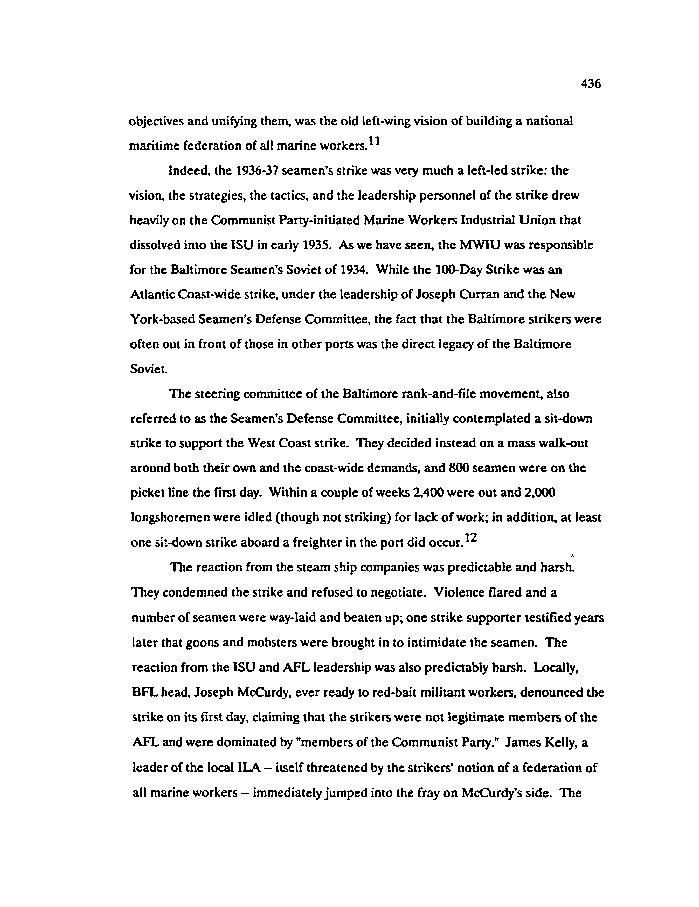|
436
objectives and unifying them, was the old left-wing vision of building a national
maritime federation of all marine workers.11
Indeed, the 1936-37 seamen's strike was very much a left-led strike: the
vision, the strategies, the tactics, and the leadership personnel of the strike drew
heavily on the Communist Party-initiated Marine Workers Industrial Union that
dissolved into the ISU in early 1935. As we have seen, the MWIU was responsible
for the Baltimore Seamen's Soviet of 1934. While the 100-Day Strike was an
Atlantic Coast-wide strike, under the leadership of Joseph Quran and the New
York-based Seamen's Defense Committee, the fact that the Baltimore strikers were
often out in front of those in other ports was the direct legacy of the Baltimore
Soviet.
The steering committee of the Baltimore rank-and-file movement, also
referred to as the Seamen's Defense Committee, initially contemplated a sit-down
strike to support the West Coast strike. They decided instead on a mass walk-out
around both their own and the coast-wide demands, and 800 seamen were on the
picket line the first day. Within a couple of weeks 2,400 were out and 2,000
longshoremen were idled (though not striking) for lack of work; in addition, at least
one sit-down strike aboard a freighter in the port did occur. ^
. :« r
The reaction from the steam ship companies was predictable and harsh.
They condemned the strike and refused to negotiate. Violence flared and a
number of seamen were way-laid and beaten up; one strike supponer testified years
later that goons and mobsters were brought in to intimidate the seamen. The
reaction from the ISU and AFL leadership was also predictably harsh. Locally,
BFL head, Joseph McCurdy, ever ready to red-bait militant workers, denounced the
strike on its first day, claiming that the strikers were not legitimate members of the
AFL and were dominated by "members of the Communist Party." James Kelly, a
leader of the local ILA - itself threatened by the strikers' notion of a federation of
all marine workers — immediately jumped into the fray on McCurdy's side. The
|

